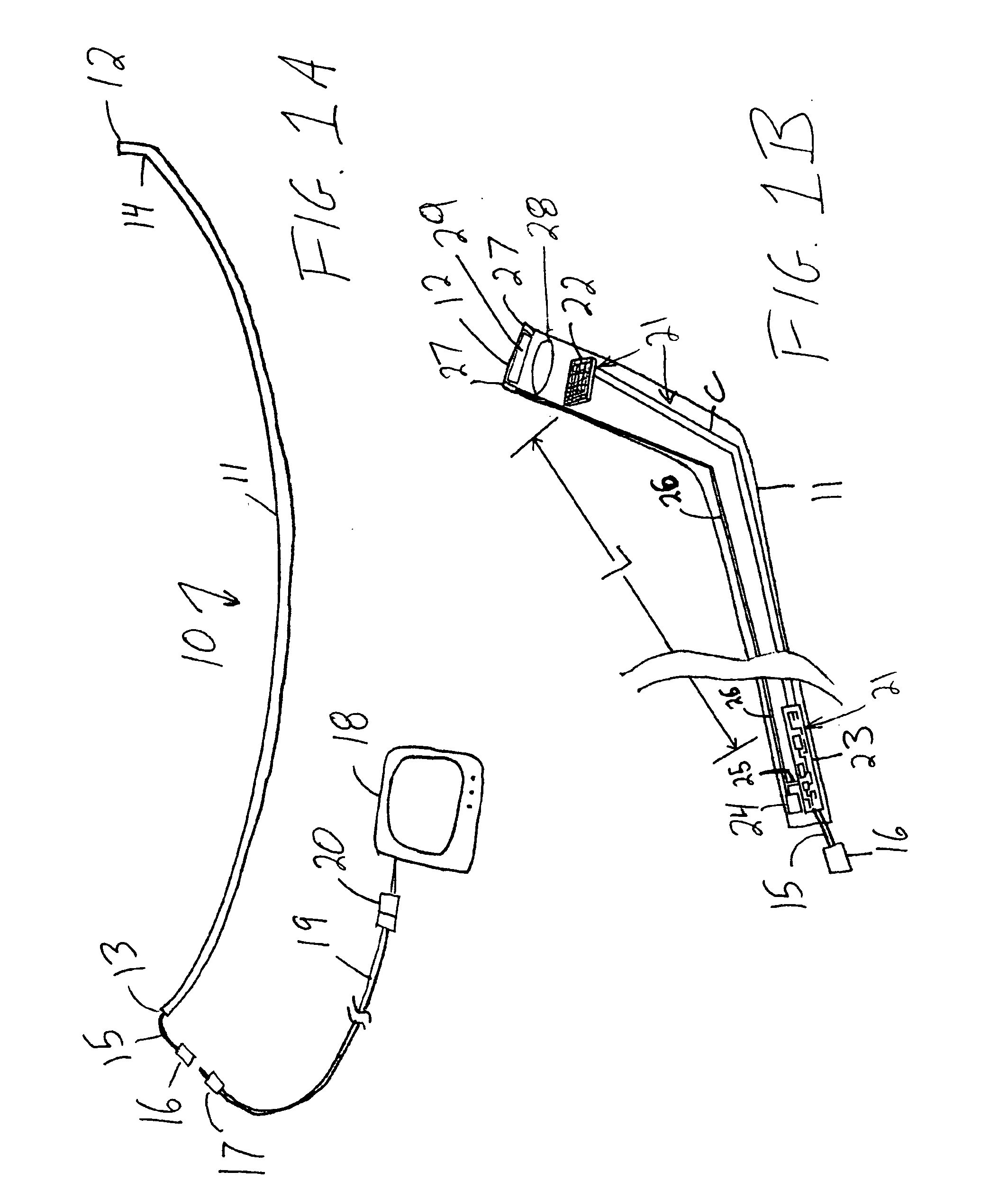Apparatus for introducing an airway tube into the trachea having visualization capability and methods of use
a technology of airway tube and trachea, which is applied in the field of apparatus for introducing airway tube into the trachea, can solve the problems of manual viewing of the laryngeal opening using a laryngoscope, not all patients are receptive to endotracheal intubation, and the need for routine intubation procedures to become difficult or even risky, so as to facilitate guiding and confirm the proper placement of the apparatus
- Summary
- Abstract
- Description
- Claims
- Application Information
AI Technical Summary
Benefits of technology
Problems solved by technology
Method used
Image
Examples
Embodiment Construction
[0027] The present invention is directed to apparatus for introducing an airway tube, such as an endotracheal tube, Combi-tube or laryngeal mask airway, into a patient's trachea, wherein the apparatus includes a video sensor that enables the health worker to visualize the intubation process and confirm proper placement of the airway tube. The apparatus of the present invention advantageously provides a relatively stiff curved bougie and a pixel array with reduced frontal profile that enables the apparatus to be used in pediatric applications and other difficult intubation scenarios without the use of a laryngoscope.
[0028] In accordance with one aspect of the invention, the apparatus includes a protrusion disposed at or near the distal end, distal of the video sensor. The protrusion may be fixed, translatable relative to the video sensor, articulable or removable and assists in completing the intubation process. Optionally, the protrusion may comprise a portion of a separable bougie...
PUM
 Login to View More
Login to View More Abstract
Description
Claims
Application Information
 Login to View More
Login to View More - R&D
- Intellectual Property
- Life Sciences
- Materials
- Tech Scout
- Unparalleled Data Quality
- Higher Quality Content
- 60% Fewer Hallucinations
Browse by: Latest US Patents, China's latest patents, Technical Efficacy Thesaurus, Application Domain, Technology Topic, Popular Technical Reports.
© 2025 PatSnap. All rights reserved.Legal|Privacy policy|Modern Slavery Act Transparency Statement|Sitemap|About US| Contact US: help@patsnap.com



